Qijuan Jie
A Rapid Power-iterative Root-MUSIC Estimator for Massive/Ultra-massive MIMO Receiver
May 16, 2022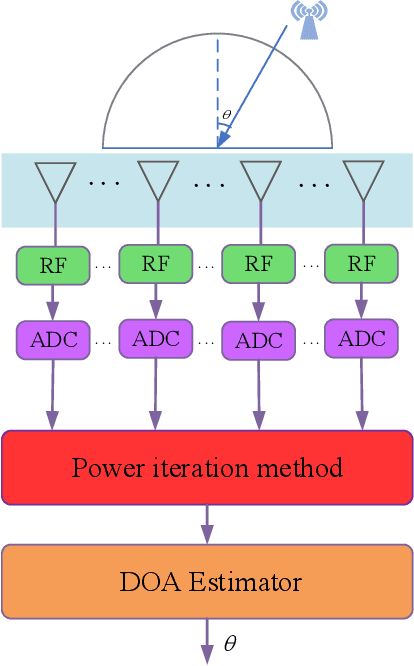
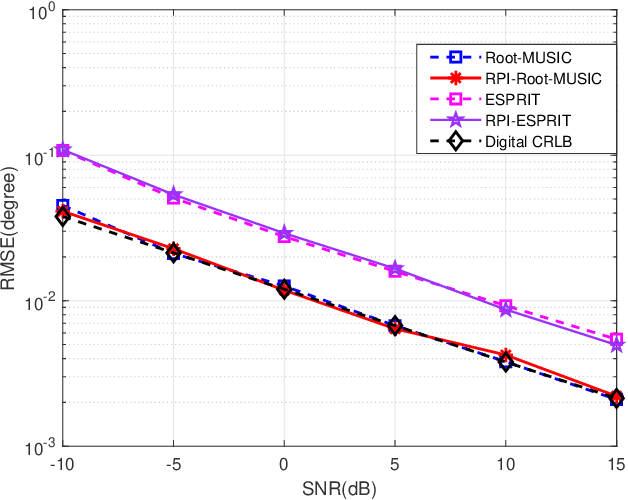
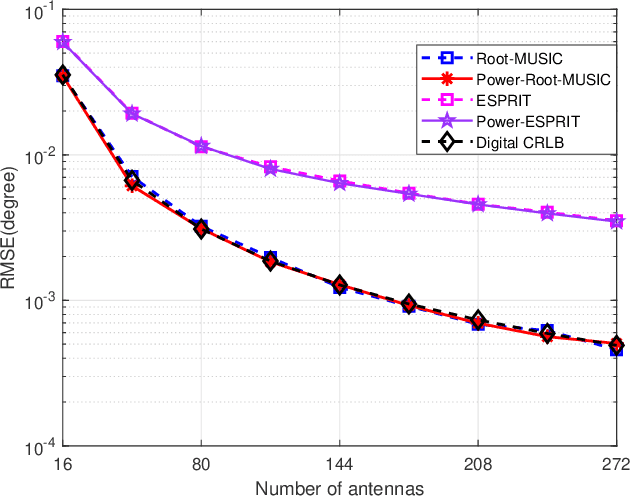
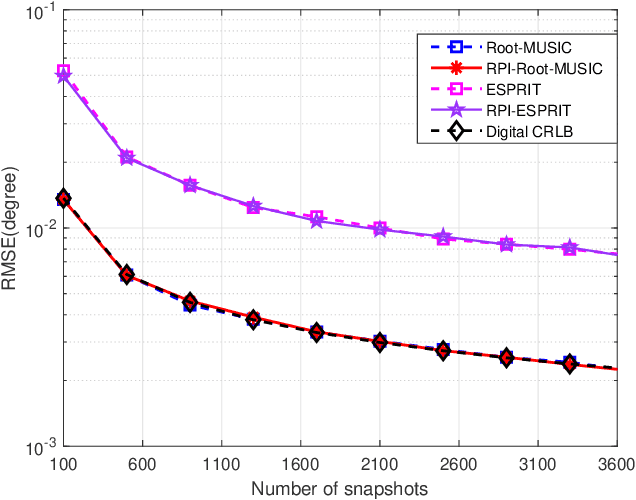
Abstract:For a passive direction of arrival (DOA) measurement system using massive multiple input multiple output (MIMO), the complexity of the covariance matrix decompositionbased DOA measurement method is extremely high. To significantly reduce the computational complexity, two strategies are proposed. Firstly, a rapid power-iterative estimation of signal parameters via rotational invariance technique (RPI-ESPRIT) method is proposed, which not only reduces the complexity but also achieves good directional measurement results. However, the general complexity is still high. In order to further the complexity, a rapid power-iterative root Multiple Signal Classification (RPIRoot-MUSIC) method is proposed. Simulation results show that the two proposed methods outperform the classical DOA estimation method in terms of computational complexity. In particular, the lowest complexity achieved by the RPI-Root-MUSIC method is about two-order-magnitude lower than that of Root-MUSIC in terms of FLOP. In addition, it is verified that the initial vector and relative error have a substantial effect on the performance of computational complexity.
Two Low-complexity DOA Estimators for Massive/Ultra-massive MIMO Receive Array
Apr 20, 2022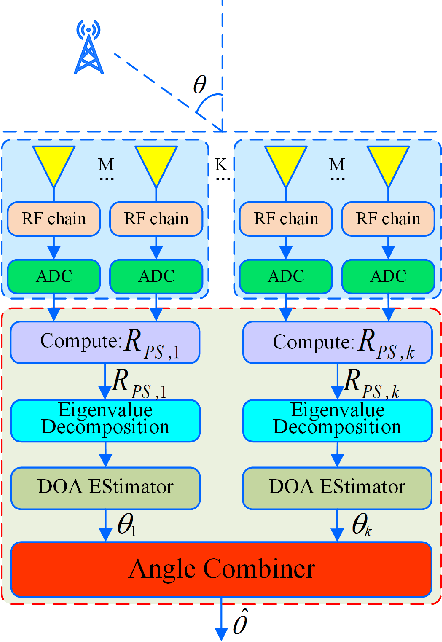
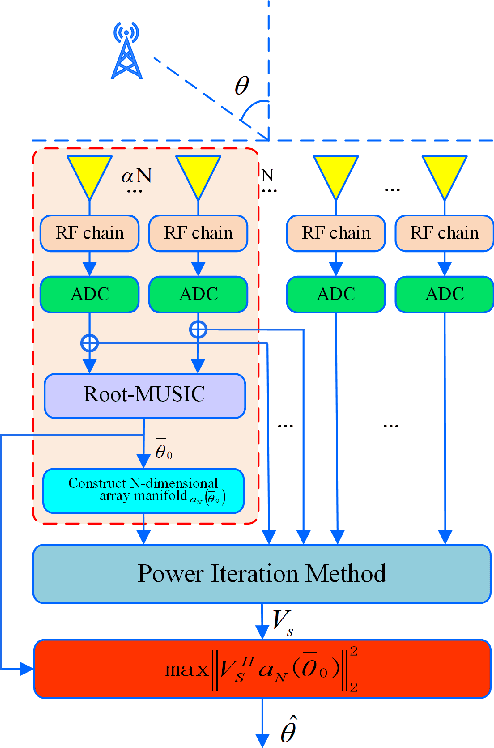
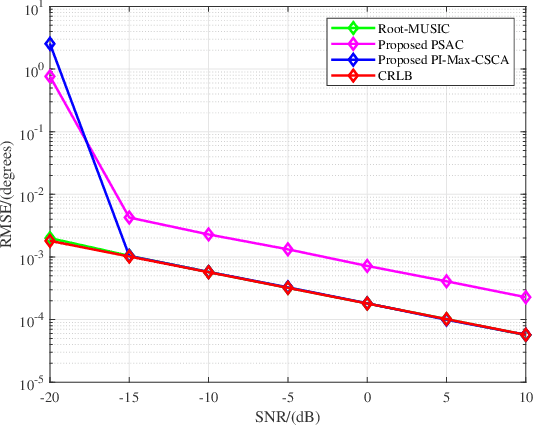
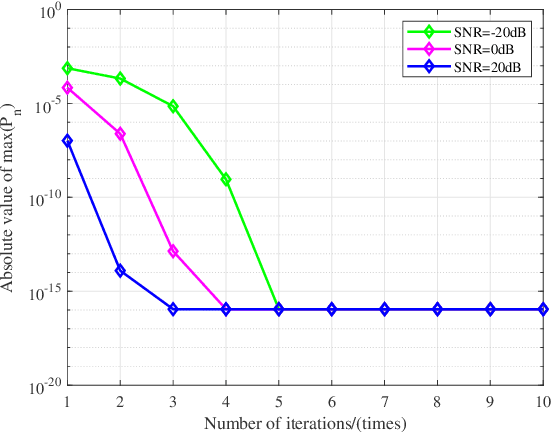
Abstract:Eigen-decomposition-based direction finding methods of using large-scale/ultra-large-scale fully-digital receive antenna arrays leads to a high or ultra-high complexity. To address the complexity dilemma, in this paper, two low-complexity estimators are proposed: partitioned subarray combining (PSAC) and power iteration max correlation successive convex approximation (PI-Max-CSCA). Compared with the conventional no-partitioned direction finding method like root multiple signal classification (Root-MUSIC), in PSAC method, the total set of antennas are equally partitioned into subsets of antennas, called subarrays, each subarray performs independent DOA estimation, and finally all DOA estimates are coherently combined to give the final estimate. In PI-Max-CSCA method, using a fraction of all subarrays to make an initial coarse direction measurement (ICDM), the power iterative method is adopted to compute the more precise steering vector (SV) by exploiting the total array, and a more accurate DOA value is found using ICDM and SV through the maximum correlation method solved by successive convex approximation.
Machine Learning Methods for Inferring the Number of Passive Emitters via Massive MIMO Receive Array
Mar 02, 2022
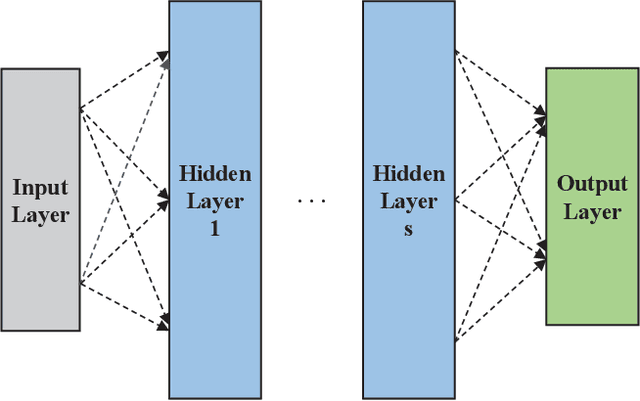

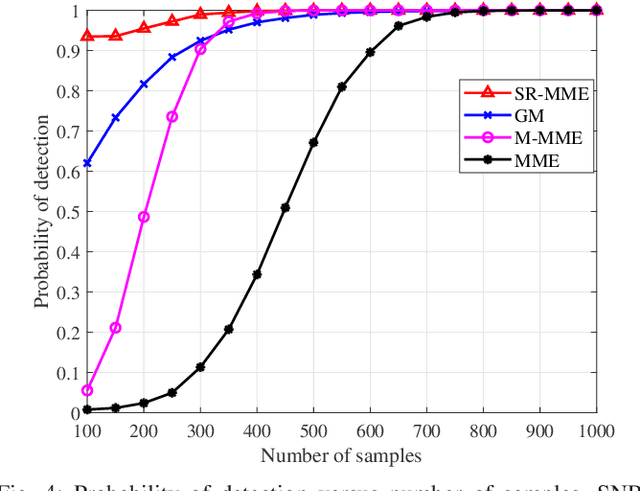
Abstract:To improve the efficiency and accuracy of direction finding with massive MIMO receive array, it is necessary to determine the specific number of signal emitters in advance. In this paper, we present a complete DOA preprocessing system for inferring the number of passive emitters. Firstly, in order to improve the accuracy of detecting the number of signals, two high-precision signal detectors, square root of maximum eigenvalue times minimum eigenvalue (SR-MME) and geometric mean (GM), are proposed. Compared to other detectors, SR-MME and GM can achieve a high detection probability while maintaining extremely low false alarm probability. Secondly, if the existence of emitters is determined by detectors, we need to further confirm their number, that is a problem of pattern classification. Therefore, we perform feature extraction on the the eigenvalue sequence of sample covariance matrix to construct feature vector and innovatively propose a multi-layer neural network (ML-NN). Additionally, the support vector machine (SVM), and naive Bayesian classifier (NBC) are also designed. The simulation results show that the machine learning-based methods can achieve good results in signal classification, especially neural networks, which can always maintain the classification accuracy above 70\% with massive MIMO receive array. Finally, we analyze the classical signal classification methods, Akaike (AIC) and Minimum description length (MDL). It is concluded that the two methods are not suitable for scenarios with massive receive arrays, and they also have much worse performance than machine learning-based classifiers.
Machine-learning-aided Massive Hybrid Analog and Digital MIMO DOA Estimation for Future Wireless Networks
Jan 12, 2022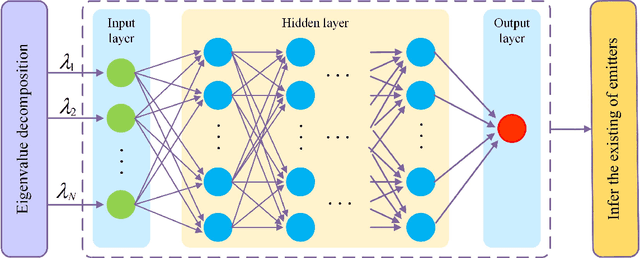
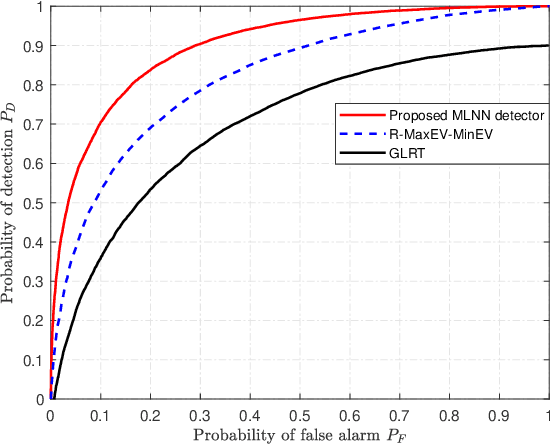
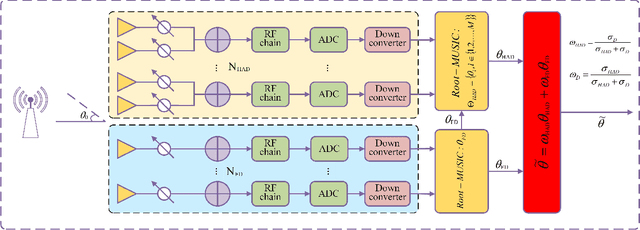
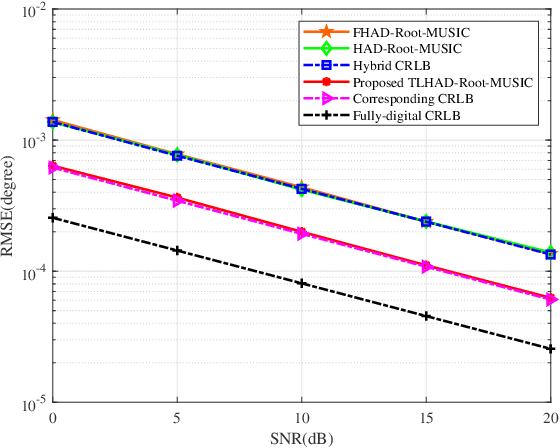
Abstract:Due to a high spatial angle resolution and low circuit cost of massive hybrid analog and digital (HAD) multiple-input multiple-output (MIMO), it is viewed as a key technology for future wireless networks. Combining a massive HAD-MIMO with direction of arrinal (DOA) will provide a high-precision even ultra-high-precision DOA measurement performance approaching the fully-digital (FD) MIMO. However, phase ambiguity is a challenge issue for a massive HAD-MIMO DOA estimation. In this paper, we review three aspects: detection, estimation, and Cramer-Rao lower bound (CRLB) with low-resolution ADCs at receiver. First, a multi-layer-neural-network (MLNN) detector is proposed to infer the existence of passive emitters. Then, a two-layer HAD (TLHAD) MIMO structure is proposed to eliminate phase ambiguity using only one-snapshot. Simulation results show that the proposed MLNN detector is much better than both the existing generalized likelihood ratio test (GRLT) and the ratio of maximum eigen-value (Max-EV) to minimum eigen-value (R-MaxEV-MinEV) in terms of detection probability. Additionally, the proposed TLHAD structure can achieve the corresponding CRLB using single snapshot.
DOA Estimation Using Massive Receive MIMO: Basic Principles, Key Techniques, Performance Analysis, and Applications
Sep 01, 2021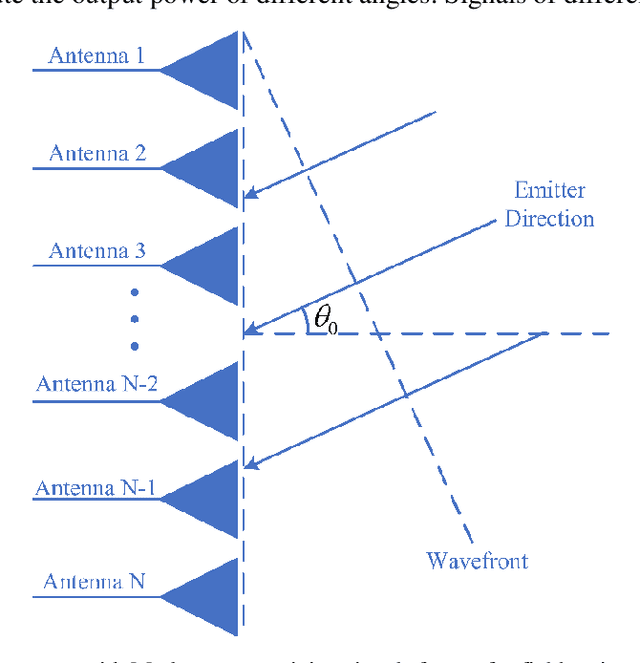

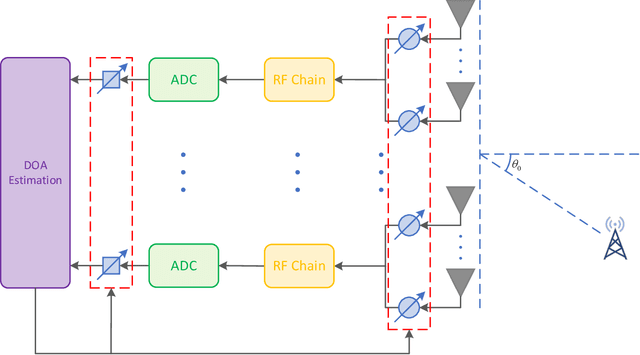

Abstract:As massive multiple-input multiple-output (MIMO) becomes popular, direction of arrival (DOA) measurement has been made a real renaissance due to the high-resolution achieved. Thus, there is no doubt about DOA estimation using massive MIMO. The purpose of this paper is to describe its basic principles and key techniques, to present the performance analysis, and to appreciate its engineering applications. It is anticipated that there are still many challenges in DOA estimation using massive receive MIMO, such as high circuit cost, high energy consumption and high complexity of the algorithm implementation. New researches and breakthroughs are illustrated to deal with those problems. Then, a new architecture, hybrid analog and digital (HAD) massive receive MIMO with low-resolution ADCs, is presented to strike a good balance among circuit cost, complexity and performance. Then, a novel three-dimensional (3D) angle of arrival (AOA) localization method based on geometrical center is proposed to compute the position of a passive emitter using single base station equipped with an ultra-massive MIMO system. And, it can achieve the Cramer-Rao low bound (CRLB). Here, the performance loss is also analyzed to quantify the minimum number of bits. DOA estimation will play a key role in lots of applications, such as directional modulation, beamforming tracking and alignment for 5G/6G.
High-performance Passive Eigen-model-based Detectors of Single Emitter Using Massive MIMO Receivers
Aug 03, 2021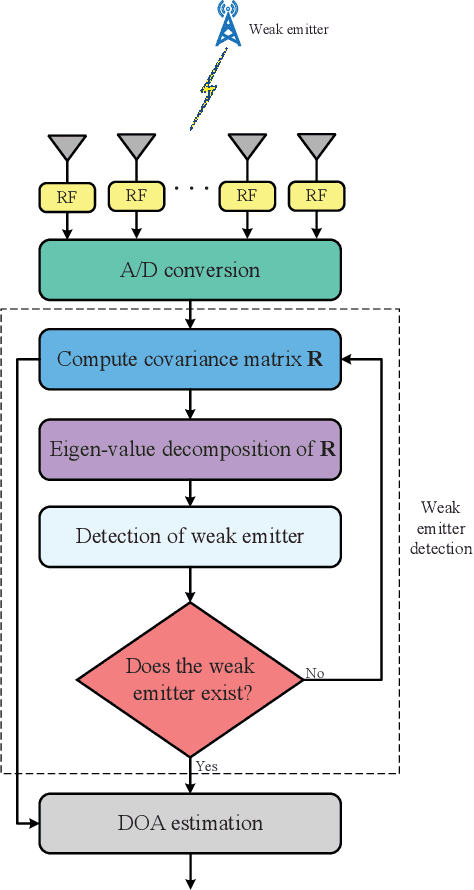
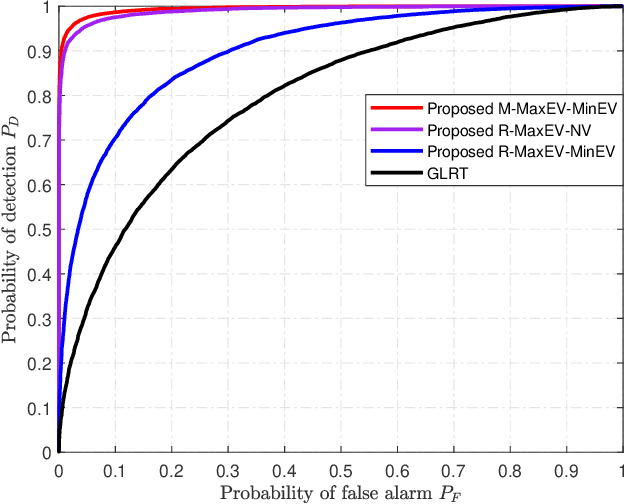
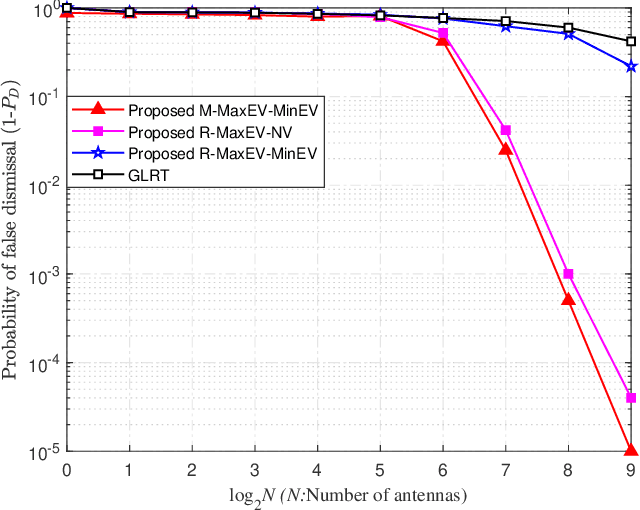
Abstract:For a passive direction of arrival (DoA) measurement system using massive multiple input multiple output (MIMO), it is mandatory to infer whether the emitter exists or not before performing DOA estimation operation. Inspired by the detection idea from radio detection and ranging (radar), three high-performance detectors are proposed to infer the existence of single passive emitter from the eigen-space of sample covariance matrix of receive signal vector. The test statistic (TS) of the first method is defined as the ratio of maximum eigen-value (Max-EV) to minimum eigen-value (R-MaxEV-MinEV) while that of the second one is defined as the ratio of Max-EV to noise variance (R-MaxEV-NV). The TS of the third method is the mean of maximum eigen-value (EV) and minimum EV(M-MaxEV-MinEV). Their closed-form expressions are presented and the corresponding detection performance is given. Simulation results show that the proposed M-MaxEV-MinEV and R-MaxEV-NV methods can approximately achieve the same detection performance that is better than the traditional generalized likelihood ratio test method with false alarm probability being less than 0.3.
DOA Estimation for Hybrid Massive MIMO Systems using Mixed-ADCs: Performance Loss and Energy Efficiency
Jul 21, 2021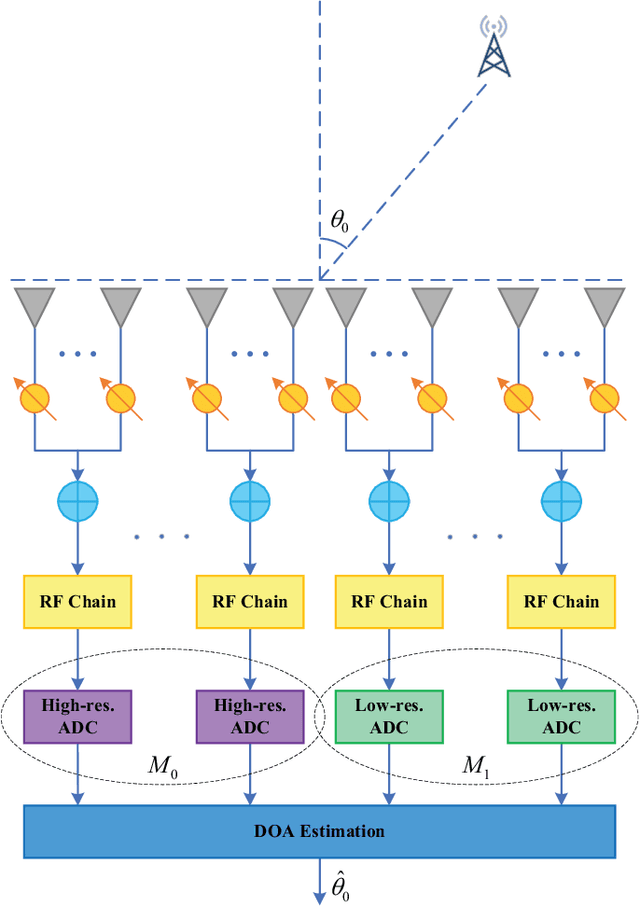
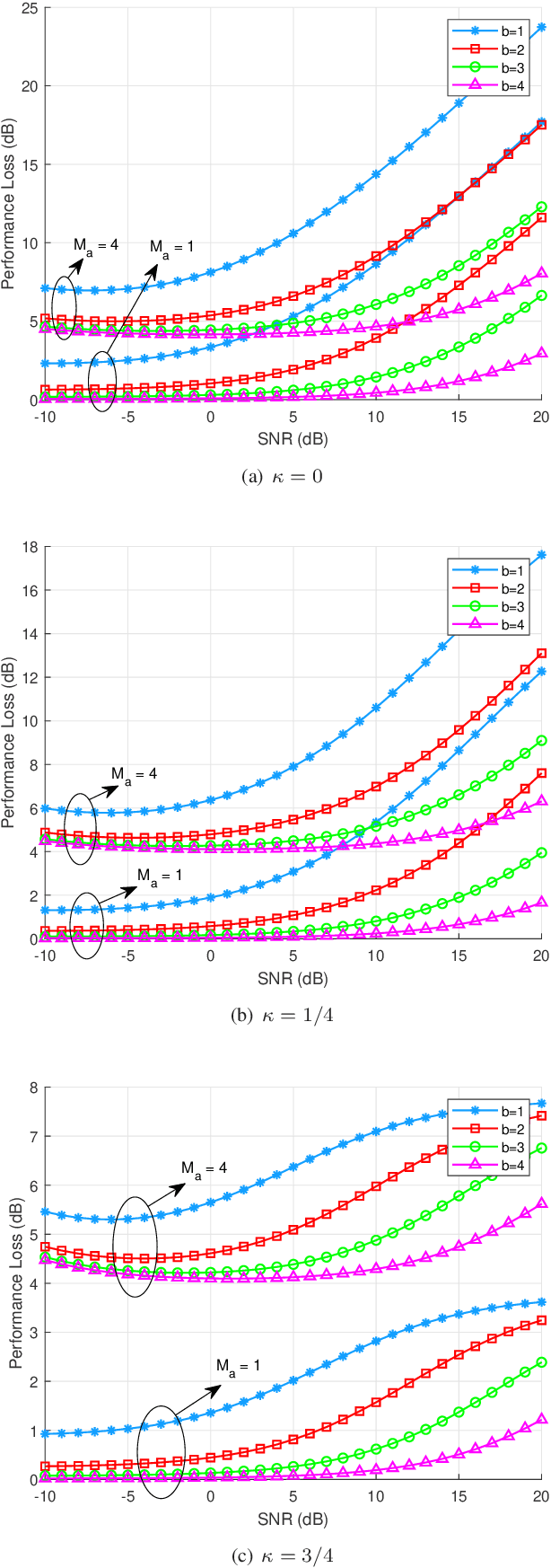
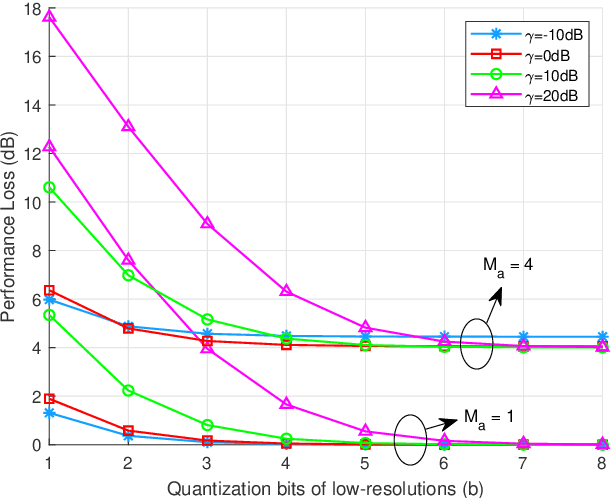
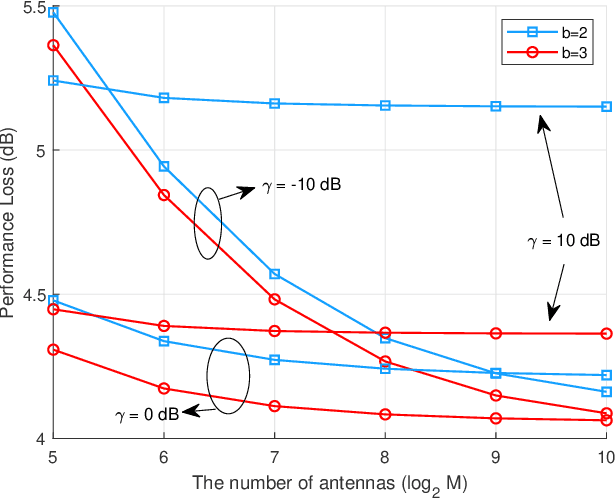
Abstract:Due to the power consumption and high circuit cost in antenna arrays, the practical application of massive multipleinput multiple-output (MIMO) in the sixth generation (6G) and future wireless networks is still challenging. Employing lowresolution analog-to-digital converters (ADCs) and hybrid analog and digital (HAD) structure is two low-cost choice with acceptable performance loss. In this paper, the combination of the mixedADC architecture and HAD structure employed at receiver is proposed for direction of arrival (DOA) estimation, which will be applied to the beamforming tracking and alignment in 6G. By adopting the additive quantization noise model, the exact closedform expression of the Cramer-Rao lower bound (CRLB) for the HAD architecture with mixed-ADCs is derived. Moreover, the closed-form expression of the performance loss factor is derived as a benchmark. In addition, to take power consumption into account, energy efficiency is also investigated in our paper. The numerical results reveal that the HAD structure with mixedADCs can significantly reduce the power consumption and hardware cost. Furthermore, that architecture is able to achieve a better trade-off between the performance loss and the power consumption. Finally, adopting 2-4 bits of resolution may be a good choice in practical massive MIMO systems.
 Add to Chrome
Add to Chrome Add to Firefox
Add to Firefox Add to Edge
Add to Edge